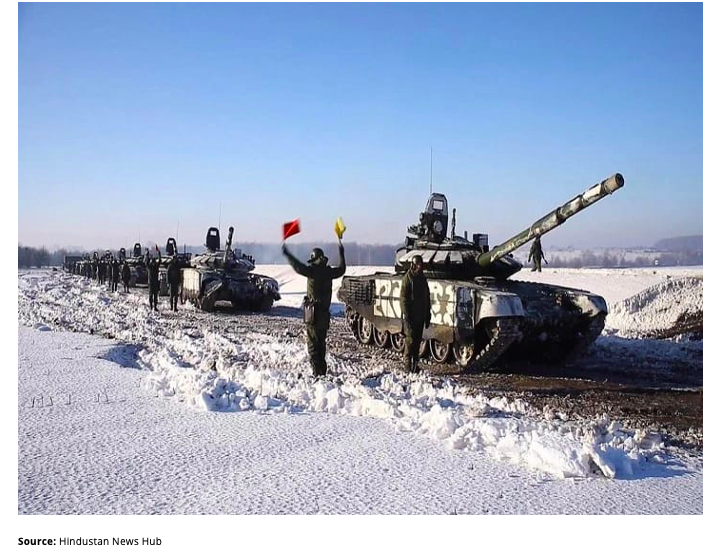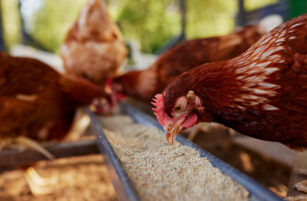Insight Focus
- The April WASDE didn’t address Russia’s military presence in Ukrainian fields.
- Agricultural Ministry suggests that 20% of Ukrainian area is under Russian control, hitting plantings.
- Volatility and high prices to persist.
Nixal’s Forecast
Our price forecast for 2021/22 (Sep/Oct) Chicago corn remains unchanged in a range of 5.5 to 6 USD/bu. The average price since the start of the new crop is running at 6.1 USD/bu.
Market Commentary
Grains markets rallied last Friday following the publication of the USDA’s April WASDE. Global grains ending stocks were cut by 1.5m tonnes and Ukrainian corn production was unaddressed. We’re now entering the planting season, adding additional volatility. High prices should persist.

US corn ending stocks were left unchanged with feed usage cut and ethanol demand increased. Production was left unchanged. US wheat ending stocks were increased by 25m bushels, with production untouched but feed and export demand lowered. US soybean stocks were decreased by 25m bushels, with production unchanged and export estimates increased.
Global corn stocks were increased by 4.5m tonnes with the main production increases seen in Brazil (2mmt), the EU (700kmt) and South-East Asia (700kmt).
Consumption was also increased by 600k tonnes, but most of the growth in ending stocks was concentrated in Ukraine (2.2mmt) as exports were cut by 2.5m tonnes. The USDA left Ukrainian production unchanged at 41.9m tonnes, still not considering the war’s impact on plantings. We still think the war will disrupt things here.
The global corn stock build now totals 13.3m tonnes.

Global wheat stocks were cut by 3m tonnes with immaterial changes to production, and demand was increased by 3.8m tonnes. The USDA reduced export estimates for the EU (-3.5mmt) and Ukraine (-1mmt), upping Russia’s by 1mmt. Global stock draw in Wheat is now of 12,3 mill ton.
In South America, Argentina’s corn harvest is 17% complete with just 21% of corn in good-to-excellent condition. BAGE maintained its production forecast at 49m tonnes. And in Brazil, Conab increased its corn production forecast by 3.3m tonnes on favourable weather during March. It now thinks production will reach 115.6m tonnes, highly aligned with the USDA’s 116m tonne forecast.
Ukrainian spring planting is 6.3% complete. Spring wheat planting is 59.1% complete, double last year’s level. Corn planting is 0.2% complete but planting takes place later than wheat. The Agricultural Ministry said that some 20% of Ukrainian area is under Russian control or under conflict and will not be planted.

Even if the war ends now, the logistical infrastructure required to get the grains to the main exporting ports appears highly disrupted. Initial estimates suggest that it’ll take at least six months of repair work before logistics can run smoothly again. The USDA has not factored in any negative impact on corn planting, though, and has reduced exports by just 2.5m tonnes. We think these numbers are conservative.
In France, 92% of the wheat crop ranks good-to-excellent, up 5% on the year and unchanged from last week.
Aside from the disruption to Ukrainian plantings and trade flows, the newly commenced planting season in the Northern Hemisphere is adding volatility. Weather patterns will be heavily in focus going forward.
In summary, we don’t think the April WASDE included the risk of lower Ukrainian corn production. We then have the logistical pipeline, which won’t likely be repaired unless the war ends in the coming days. We also think the potential impact on yields due to weak fertiliser supply has also not been taken into account globally. Finally, we’re entering into a weather-driven market as it’ll impact planting progress as well as crop condition during the coming months.
The high price environment should stay. The only downside risk would be a quick end of the war allowing Ukrainian farmers to plant most of the area.
Other Insights That May Be of Interest…
Ukraine & Grains: Who is Most at Risk?
Russia & Ukraine Grains Likely to Be Disrupted into H2’22
Ukrainian Grains Production Faces Severe Delays
Explainers That May Be of Interest…














